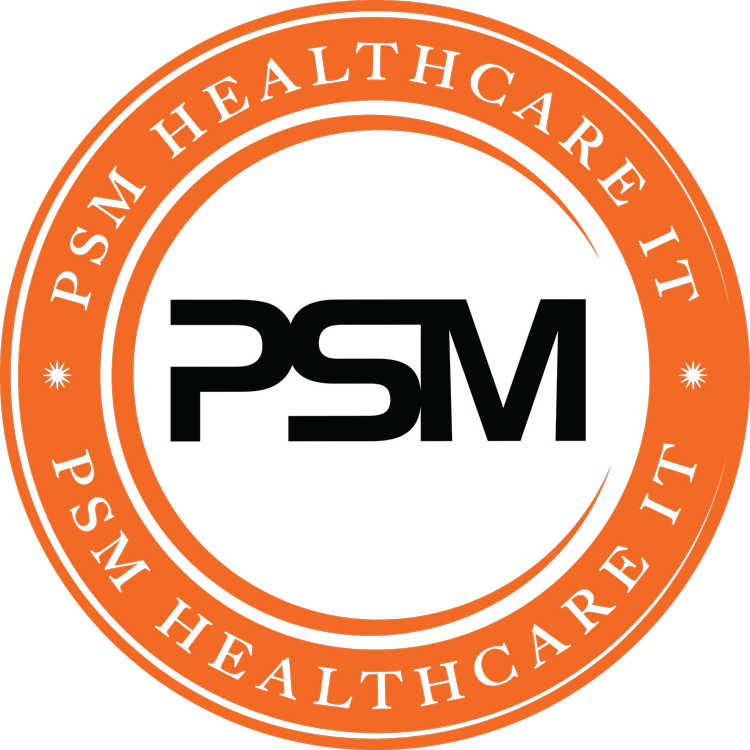PSM Healthcare IT – Oakland
Welcome to PSM Healthcare Information Technology, your trusted IT solutions provider in Oakland. We specialize in delivering advanced technology solutions tailored for the healthcare sector, ensuring your operations are seamless, efficient, and secure.
Our Services
Electronic Health Records (EHR) Systems Streamline patient data management with our advanced EHR systems. We help healthcare providers in Oakland transition smoothly to digital records.
Healthcare IT Consulting Our expert consultants provide strategic advice to optimize your IT infrastructure, ensuring compliance with the latest healthcare regulations and standards.
Data Security and Compliance Protect patient information with our robust security solutions. We ensure your systems are compliant with HIPAA and other relevant regulations.
Telemedicine Solutions Expand your reach and improve patient care with our telemedicine platforms. We provide the technology to connect healthcare providers and patients remotely.
Network Infrastructure Build a reliable and scalable IT network with our infrastructure solutions. We design and implement networks that support the unique needs of healthcare facilities in Oakland.
Why Choose Us?
Expertise in Healthcare IT With years of experience in the healthcare industry, we understand the unique challenges and requirements of healthcare IT.
Customized Solutions We tailor our services to meet the specific needs of your organization, ensuring the best fit for your IT environment.
Proven Track Record Our team has a history of successful projects and satisfied clients in Oakland and beyond.
What is telemedicine and how does it benefit healthcare in Oakland?
How do wearable health monitoring devices contribute to patient care?
What are the benefits of cloud-based electronic health records (EHR)?
How does predictive analytics aid in early disease detection?
What is the significance of robotic process automation in healthcare?
Healthcare in Oakland is evolving with innovative technologies, including telemedicine integration and precision medicine platforms, that enhance patient care, streamline operations, and support radiology projects. IT solutions, including telemedicine integration and precision medicine platforms, are transforming how medical professionals, including diagnostic imaging specialists, manage data, communicate, and provide services. By adopting these advancements, healthcare providers can improve efficiency and patient outcomes. With a focus on security and accessibility, these technologies ensure sensitive information remains protected while being easily available to those who need it. This listicle explores the most effective IT solutions for healthcare in Oakland, highlighting their benefits and real-world applications. Discover how these tools can elevate your healthcare experience and boost operational success. Scroll down for reviews of our top picks that can make a difference in your healthcare journey.
Key Takeaways
Embrace telemedicine to enhance patient access and convenience, allowing for remote consultations that save time and resources.
Consider implementing AI-powered diagnostic tools to improve accuracy in patient assessments and streamline the diagnosis process.
Utilize blockchain technology to secure health records, ensuring patient data privacy and reducing the risk of breaches.
Invest in wearable health monitoring devices to empower patients in managing their health actively and provide real-time data to healthcare providers.
Explore virtual reality therapy solutions as innovative approaches to treat conditions like PTSD or anxiety, offering immersive experiences for patients.
Leverage IoT-enabled patient tracking systems to enhance care coordination and monitor patient progress more effectively.
1. Telemedicine for Remote Consultations
Telemedicine integration enhances patient access to healthcare services through virtual consultations. Patients can connect with healthcare providers from the comfort of their homes. This convenience is especially crucial for those with mobility issues or those living in remote areas.
Telehealth platforms streamline communication between healthcare providers and patients. These platforms, powered by psm healthcare information technology, allow for real-time discussions, making it easier to diagnose and manage conditions without the need for an office visit. According to a report by the American Hospital Association, over 76% of hospitals now offer telehealth services, highlighting its growing importance in modern healthcare delivery.
Reducing the need for in-person visits improves efficiency for both parties. Patients save time and travel costs, while healthcare professionals can manage their schedules more effectively. For instance, a study published in the Journal of Medical Internet Research found that telemedicine can reduce patient no-show rates by up to 50%.
PSM medical IT services play a vital role in this process. They ensure that healthcare providers have the necessary tools and support to implement telemedicine effectively. PSM medical imaging specialists further enhance these services by providing remote imaging consultations, allowing specialists to review images and provide feedback quickly.
2. AI-Powered Diagnostic Tools
AI-powered diagnostic tools enhance diagnostic accuracy and speed in healthcare. These tools utilize advanced algorithms and psm healthcare information technology to analyze medical images rapidly. This automation of data analysis allows healthcare professionals to make informed decisions more efficiently.
Integration with existing healthcare IT systems is crucial for seamless functionality. AI tools can easily connect with current infrastructure, ensuring that healthcare providers can access vital information without disruption. This integration, powered by psm healthcare information technology, helps create a cohesive workflow among diagnostic imaging specialists and other medical staff.
Precision medicine platforms benefit significantly from AI technologies. They tailor treatment plans based on individual patient data using psm healthcare information technology, leading to improved outcomes. For instance, studies show that using AI in diagnostic imaging can reduce misdiagnosis rates by up to 30%.
The support provided by experienced IT professionals at PSM Medical Imaging Solutions plays a key role in the effective implementation of these AI tools. Their expertise ensures that the systems are optimized for performance and reliability.
Healthcare facilities that adopt AI-powered diagnostic tools witness improvements in patient care and operational efficiency. By reducing the time needed for diagnosis, these tools allow healthcare workers to focus on providing quality care.
3. Blockchain for Secure Health Records
Blockchain technology serves as a healthcare security solution that ensures the security and integrity of patient records. This decentralized system prevents unauthorized access and tampering, making it ideal for sensitive health information.
Secure sharing of health data among authorized providers becomes seamless with blockchain. Each transaction is recorded in a block, linked to previous blocks, and encrypted. This creates a chain that is nearly impossible to alter. For instance, a study by the University of California revealed that using blockchain could reduce healthcare fraud by up to 50%.
Patient trust significantly increases when they know their health data is managed transparently. Blockchain offers an immutable record of all interactions with their data. Patients can see who accessed their records and when, reinforcing confidence in the system.
Real-life applications highlight these benefits. In 2020, a pilot program in Michigan used blockchain to manage vaccine records securely. The program reported zero breaches during its operation, showcasing how effective this technology can be in protecting sensitive information.
Key features of blockchain in healthcare include:
Decentralization: Eliminates single points of failure.
Transparency: All transactions are visible to authorized users.
Immutability: Once data is entered, it cannot be changed or deleted.
These features make blockchain an essential tool for modern healthcare systems aiming for enhanced security and trustworthiness.
4. Wearable Health Monitoring Devices
Wearable health monitoring devices track real-time health metrics for patients. These gadgets, such as smartwatches and fitness trackers, measure vital signs like heart rate, blood pressure, and oxygen levels. They empower patients to take charge of their health.
Proactive health management becomes possible through continuous monitoring and alerts. For instance, if a user’s heart rate exceeds a certain threshold, the device sends an alert. This immediate feedback can prompt timely medical intervention, potentially preventing serious health issues. Studies show that patients using wearables report a 30% increase in proactive health behaviors.
Integration of data from wearables into electronic health records (EHR) creates comprehensive patient profiles. Healthcare providers gain access to a wealth of information, enabling better decision-making. The data allows for personalized treatment plans based on real-time metrics rather than outdated information.
Consider the case of a patient with diabetes. Using a wearable device, they can monitor glucose levels throughout the day. This data syncs with their EHR, allowing doctors to adjust medications more effectively.
Benefits of wearable health monitoring devices include:
Improved patient engagement
Enhanced communication between patients and providers
Early detection of potential health problems
These devices are transforming healthcare in Oakland, making it more efficient and patient-centered. By leveraging technology, both patients and providers benefit from improved health outcomes and streamlined care processes.
5. Virtual Reality Therapy Solutions
Virtual Reality Therapy Solutions utilize technology to enhance mental health treatment and rehabilitation. This innovative approach creates immersive environments where patients can engage in tailored treatment programs.
Patients often experience significant improvements when they participate in VR therapy. For instance, studies show that exposure to virtual environments can reduce anxiety and improve emotional regulation. One study found that 70% of participants reported lower levels of anxiety after just a few sessions with VR therapy.
These solutions also facilitate a unique way to assess patient progress. VR-based assessments allow healthcare providers to gather real-time data on a patient’s responses and behaviors within the virtual setting. This feedback mechanism helps therapists adjust treatment plans based on individual needs.
Key features of Virtual Reality Therapy Solutions include:
Immersive Experiences: Patients can interact with realistic scenarios that mimic real-life challenges.
Customizable Programs: Therapists can tailor experiences to target specific issues like phobias or PTSD.
Progress Tracking: Continuous monitoring of patient reactions provides valuable insights into their development.
6. IoT-enabled Patient Tracking Systems
IoT-enabled patient tracking systems revolutionize healthcare delivery. These systems deploy Internet of Things devices to monitor patient movements and conditions in real time. They enhance patient safety by providing immediate alerts for any irregularities.
Real-time tracking improves care coordination among medical staff. For instance, nurses can quickly locate patients who may need assistance, reducing response times during critical situations. According to a study published in the Journal of Medical Systems, facilities that implemented IoT tracking experienced a 30% reduction in patient wait times.
Data collected from these devices is invaluable. It helps analyze patterns in patient behavior and health status. Facilities can utilize this data to make informed decisions regarding resource allocation and staffing needs. Moreover, this analysis contributes to better management of sensitive patient data, ensuring compliance with regulations such as HIPAA.
The integration of IoT technology into healthcare not only streamlines operations but also fosters a more personalized approach to treatment. For example, wearable devices can track vital signs and alert healthcare providers if a patient’s condition worsens. This proactive approach leads to timely interventions and improved patient outcomes.
In summary, IoT-enabled patient tracking systems enhance the quality of care through real-time monitoring, data analysis, and improved communication among healthcare providers. By leveraging these technologies, facilities can significantly elevate their service standards and patient satisfaction.
7. Cloud-Based Electronic Health Records
Cloud-based electronic health records (EHR) systems revolutionize electronic healthcare information management. These systems enhance data accessibility and collaboration among healthcare providers. With cloud solutions, medical professionals can access sensitive healthcare data anytime, anywhere.
Data security is a top priority for cloud-based EHR systems. They comply with HIPAA regulations, ensuring that patient information remains confidential and protected. Advanced encryption methods safeguard sensitive healthcare data against unauthorized access. Regular audits and updates help maintain compliance with evolving regulations.
Remote access is another significant advantage of cloud-based EHR systems. Healthcare providers can quickly retrieve patient records from different locations. This capability improves response times during emergencies and enhances overall patient care.
Integration of various EHR systems is seamless in the cloud environment. Providers can share electronic health information across different platforms without hassle. This integration fosters better communication among specialists, leading to more coordinated treatment plans.
A study by the Office of the National Coordinator for Health Information Technology found that 86% of hospitals reported improved patient care after adopting cloud-based EHR systems. The ability to access real-time data allows for informed decision-making and timely interventions.
In summary, cloud-based electronic health records offer enhanced accessibility, robust security features, and seamless integration for healthcare providers. These systems transform how sensitive healthcare data is managed, ultimately improving patient outcomes through efficient collaboration and care delivery.
8. Robotic Process Automation in Healthcare
Robotic Process Automation (RPA) transforms healthcare operations. RPA automates repetitive tasks, allowing healthcare staff to focus more on patient care. This technology significantly reduces human error in administrative processes.
RPA is particularly beneficial for radiology projects. It helps manage patient data, appointment scheduling, and billing efficiently. By streamlining these tasks, radiologic technologist professionals can devote more time to direct patient interactions and diagnostic procedures.
The implementation of RPA aligns with HIPAA regulations as it ensures data privacy and security during automation. Automated systems can handle sensitive information without compromising compliance, making healthcare operations smoother and safer.
Key benefits of RPA in healthcare include:
Increased Efficiency: Automating routine tasks speeds up workflows.
Error Reduction: Minimizes mistakes associated with manual data entry.
Cost Savings: Reduces operational costs by decreasing the need for extensive administrative staff.
For instance, a recent study found that hospitals using RPA saw a 30% reduction in processing time for patient records. This improvement not only enhances service delivery but also boosts overall patient satisfaction.
PSM Healthcare IT leverages RPA to optimize various processes within healthcare settings. By adopting such technology, healthcare providers can improve their operational efficiency while maintaining high standards of patient care.
9. Predictive Analytics for Early Detection
Predictive analytics plays a crucial role in healthcare by identifying potential health risks before they escalate. This technology analyzes vast amounts of patient data, allowing healthcare providers to spot trends and patterns that indicate emerging health issues.
Healthcare professionals can use historical data to predict future outcomes. For instance, if a patient has multiple visits for respiratory issues, predictive analytics can flag them for further assessment. This proactive approach helps in implementing preventive measures early, potentially reducing hospital admissions.
Data-driven insights enhance clinical decision-making significantly. By examining patient demographics, medical histories, and lifestyle factors, providers can tailor interventions to individual needs. A study showed that hospitals using predictive analytics reduced readmission rates by 20%. This not only improves patient outcomes but also decreases healthcare costs.
Furthermore, predictive analytics supports the development of personalized care plans. By analyzing data trends, clinicians can recommend specific lifestyle changes or treatments tailored to patients’ unique situations. For example, a diabetic patient’s data might reveal patterns that suggest adjustments in medication or diet.
In summary, predictive analytics transforms healthcare by enabling early detection of health risks. It empowers providers with actionable insights, promotes preventive care strategies, and enhances overall patient care quality.
10. 3D Printing for Custom Medical Devices
3D printing technology revolutionizes the creation of personalized medical devices. This innovation allows healthcare providers to design and produce devices tailored specifically to individual patient needs.
Production time significantly decreases with 3D printing. Traditional manufacturing methods can take weeks or months. In contrast, 3D printing can create custom prosthetics and implants in just a few days. This rapid turnaround is crucial in urgent medical situations where time is of the essence.
Cost efficiency also stands out in this technology. Custom devices often require expensive molds and extensive labor hours. 3D printing eliminates many of these costs, making it more accessible for healthcare facilities to offer personalized solutions. For example, studies show that 3D printed prosthetics can be produced at a fraction of the cost compared to traditional methods, sometimes saving up to 70%.
Furthermore, rapid prototyping fosters innovation in medical device design. Designers can quickly test and modify prototypes based on real-time feedback from healthcare professionals and patients. This iterative process leads to better designs that meet specific requirements, enhancing patient outcomes.
In a practical application, hospitals using 3D printing have reported improved surgery planning through customized models of patients’ anatomy. Surgeons can practice procedures on these models before actual operations, increasing success rates.
This combination of speed, cost savings, and innovation positions 3D printing as a game-changer in the healthcare industry.
Final Remarks
The advancements in IT for healthcare are transforming the landscape in Oakland. From telemedicine to AI diagnostics, each innovation enhances patient care and streamlines operations. You can see how technologies like blockchain and IoT improve security and tracking, while 3D printing customizes devices to fit individual needs.
These tools not only boost efficiency but also enhance your overall healthcare experience. Embrace these changes to stay ahead in a rapidly evolving field. Explore how these technologies can benefit your practice or organization today. Don’t miss out on the future of healthcare—take action now!
Frequently Asked Questions
What is telemedicine and how does it benefit healthcare in Oakland?
Telemedicine allows patients to consult with healthcare providers remotely. In Oakland, it enhances access to care, reduces travel time, and supports timely medical advice, especially for those with mobility issues.
How can AI improve diagnostic accuracy in healthcare?
AI-powered diagnostic tools analyze medical data quickly and accurately. They assist healthcare professionals in making better decisions, leading to improved patient outcomes and reduced misdiagnosis rates.
What role does blockchain play in securing health records?
Blockchain technology ensures secure and tamper-proof health records. It enhances patient privacy and data integrity, allowing healthcare providers in Oakland to share information safely.
How do wearable health monitoring devices contribute to patient care?
Wearable devices track vital signs and health metrics in real-time. This continuous monitoring helps healthcare providers detect issues early and encourages patients to take charge of their health.
What are the benefits of cloud-based electronic health records (EHR)?
Cloud-based EHR systems offer easy access to patient data from anywhere. They improve collaboration among healthcare teams, enhance data security, and streamline administrative tasks.
How does predictive analytics aid in early disease detection?
Predictive analytics uses historical data to identify risk factors for diseases. By analyzing trends, healthcare providers can intervene earlier, improving treatment effectiveness and patient survival rates.
What is the significance of robotic process automation in healthcare?
Robotic Process Automation (RPA) streamlines repetitive administrative tasks in healthcare. This increases efficiency, reduces human error, and allows staff to focus on patient care rather than paperwork.





